Bitumen Trefoil, Pitch Trefoil, Scurfy Pea,
Hebrew: שרעול שעיר, Arabic: بسوراليا أسفلتية الرائحة
| Scientific name: | Bituminaria bituminosa (L.) Stirton | |
| Synonym name: | Psoralea bituminosa L. | |
| Common name: | Arabian pea, Bitumen Trefoil | |
| Hebrew name: | שרעול שעיר | |
| Arabic name: | بسوراليا أسفلتية الرائحة | |
| Plant Family: | Fabaceae, קטניות |
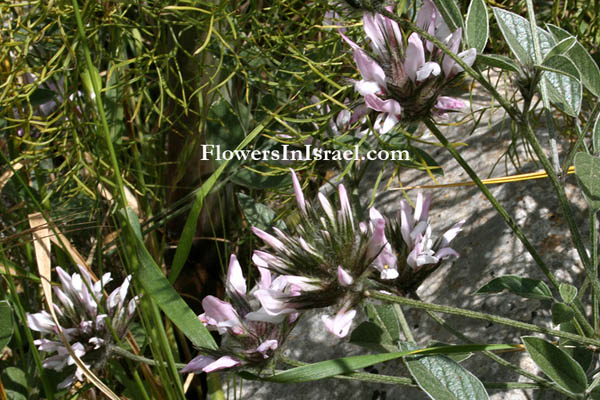
|
| Life form: | Hemicryptophyte | |
| Stems: | Erect, numerous branches and sub-branches, pubescent | |
| Leaves: | Alternate, petiolate, trifoliate, entire | |
| Flowers: | Cluster with stalked White lilach papilionaceous flowers | |
| Fruits / pods: | Light brown legume; one brown seed per fruit, ovoid, 5 mm long | |
| Flowering Period: | March, April, May, June, July | |
| Habitat: | Batha, Phrygana | |
| Distribution: | Mediterranean Woodlands and Shrublands, Semi-steppe shrublands, Deserts and extreme deserts, Montane vegetation of Mt. Hermon | |
| Chorotype: | Mediterranean | |
| Summer shedding: | Perennating |
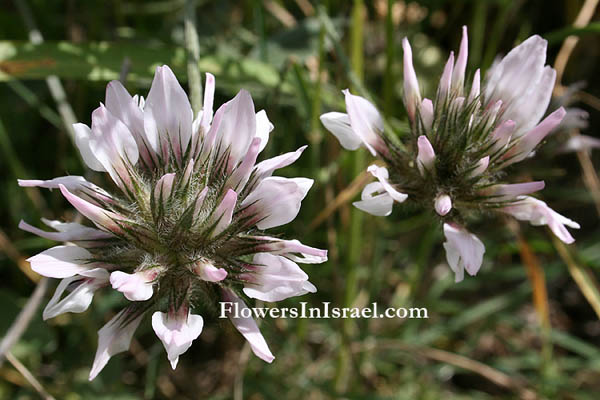
Derivation of the botanical name: Bituminaria, Latin and Greek bitumen, Greek asphaltos, concerning bitumen, tar-smelling weed. bituminosa, resembling bitumen. Psoralea, ψωραλέος psoraleos, scurfy, scabby, mangy; referring to the glandular dots on the leaves. The Hebrew name שרעול שעיר Shar-ul sa-ir: שרעול sharul, covered, "masked", שעיר sa-ir, hairy.
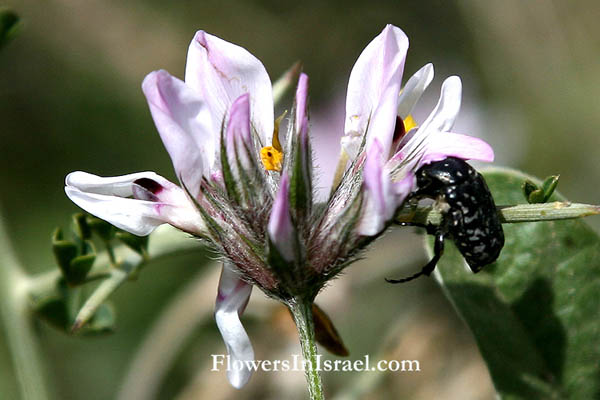
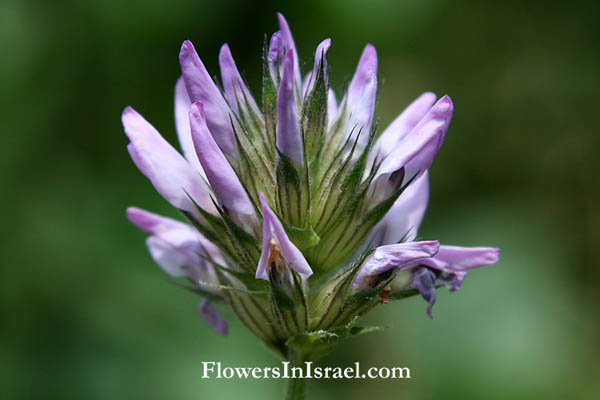
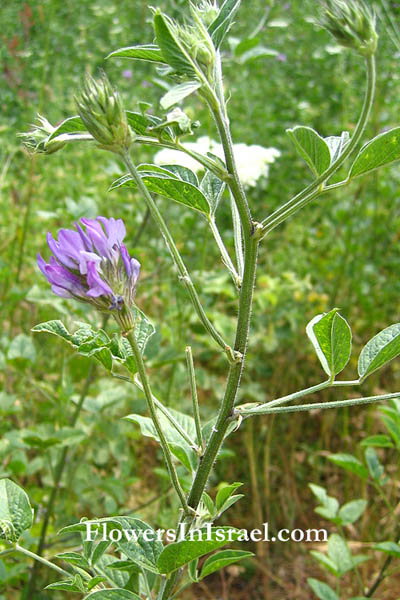
|